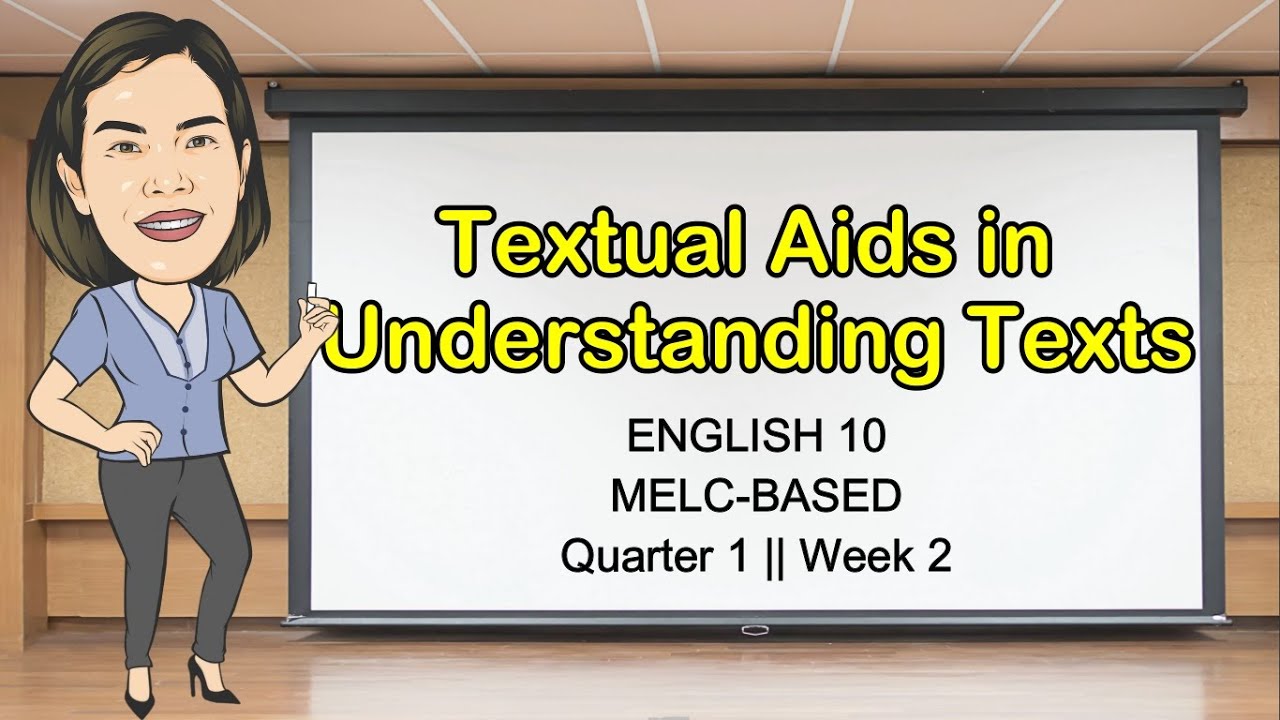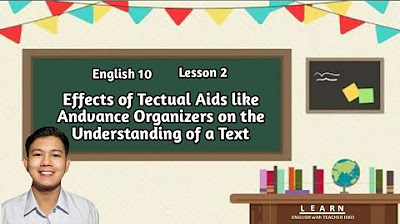TIPOLOGÍAS TEXTUALES O TIPOS DE TEXTOS - edutuber
Summary
TLDRIn this lesson, Professor Mónica introduces the concept of textual typologies, explaining various types of texts based on their intent. She covers narrative texts, which tell stories; descriptive texts that detail people, places, and events; expository texts that inform or explain; argumentative texts that defend a position; instructive texts that provide guidelines; and advertising texts aimed at persuasion. The professor emphasizes the importance of understanding both structure and intent when writing any type of text. The video concludes with a reminder to apply these principles in Spanish language learning.
Takeaways
- 😀 Text types are classified based on their intent, such as narrating, describing, informing, arguing, instructing, and advertising.
- 😀 A narrative text's purpose is to tell a story, like novels, short stories, fables, and myths.
- 😀 Descriptive texts focus on providing detailed accounts of people, places, objects, emotions, or behaviors.
- 😀 Expository or informative texts aim to explain facts or ideas objectively, using data and evidence, such as manuals and news articles.
- 😀 Argumentative texts defend a position by presenting reasons for or against a topic, aiming to persuade others, like essays and opinion articles.
- 😀 Instructional or normative texts provide guidelines or rules to complete a task, such as game instructions, laws, or recipes.
- 😀 Advertising texts aim to persuade consumers to purchase a product or service, using materials like flyers, posters, jingles, and commercials.
- 😀 Understanding the structure and intent of each text type is essential for correct writing and communication.
- 😀 Every text type has a specific function, and the intention behind the text influences its content and structure.
- 😀 Recognizing the differences between text types helps avoid mistakes in writing and ensures that the intended message is effectively conveyed.
Q & A
What is the main purpose of textual typologies?
-The main purpose of textual typologies is to classify different types of written texts based on their intention, structure, and purpose in order to guide their proper creation and usage.
How do different text types differ from each other?
-Different text types differ based on their intention, such as whether they aim to inform, describe, narrate, persuade, or instruct. For example, a narrative text aims to tell a story, while a descriptive text focuses on providing details about an object, person, or event.
What are some examples of narrative texts mentioned in the transcript?
-Examples of narrative texts mentioned include novels, short stories, fables, legends, myths, comics, and biographies.
What is the primary function of a descriptive text?
-The primary function of a descriptive text is to provide detailed descriptions of people, places, things, emotions, or events. It paints a vivid picture for the reader to understand the subject clearly.
How does an expository or informative text function?
-An expository or informative text serves the purpose of presenting facts, data, or information about a particular subject in an objective and straightforward manner, typically aiming to inform or explain a topic.
What kind of texts are considered argumentative, and what is their goal?
-Argumentative texts, such as essays, opinion articles, and critiques, aim to present reasons to support or oppose a particular idea, with the goal of convincing or persuading the reader about a stance or position.
What is the purpose of an instructive or normative text?
-The purpose of an instructive or normative text is to provide clear guidelines, rules, or instructions to achieve a specific goal or outcome, such as manuals, laws, or recipes.
How does a public advertising text differ from an argumentative one?
-A public advertising text aims to persuade the audience to purchase a product or service, using techniques to appeal to emotions and desires, whereas an argumentative text aims to convince the reader of a particular idea or viewpoint, often with logical reasoning and evidence.
What types of materials might use a descriptive text?
-Descriptive texts are often used in narrative materials, where they describe characters, settings, or events, as well as in scientific writing, travelogues, and any other context where a detailed portrayal of a subject is needed.
Why is it important to know the structure and intention of a text when writing it?
-Knowing the structure and intention of a text helps ensure that it is written correctly for its specific purpose. It allows the writer to organize ideas effectively and use the appropriate style and tone for the intended audience and outcome.
Outlines

This section is available to paid users only. Please upgrade to access this part.
Upgrade NowMindmap

This section is available to paid users only. Please upgrade to access this part.
Upgrade NowKeywords

This section is available to paid users only. Please upgrade to access this part.
Upgrade NowHighlights

This section is available to paid users only. Please upgrade to access this part.
Upgrade NowTranscripts

This section is available to paid users only. Please upgrade to access this part.
Upgrade NowBrowse More Related Video

Comunicação, expressão e redação oficial - Aula 03 - Tipologias e Gêneros Textuais

TEXTUAL AIDS IN UNDERSTANDING TEXTS || Quarter 1 Week 2 || English 10 || MELC-BASED || Aizie Dumuk

Textual Aids - English 10 - Lesson 2

Gêneros textuais – O que são Gêneros Textuais (Entenda Agora Mesmo)

ENGLISH 6 QUARTER 2 WEEK 1 - 3 | TYPES OF INFORMATIONAL / FACTUAL TEXT

Aula 1: Características dos radioisótopos - 2ª Série | Conteúdo SEDUC/SP
5.0 / 5 (0 votes)